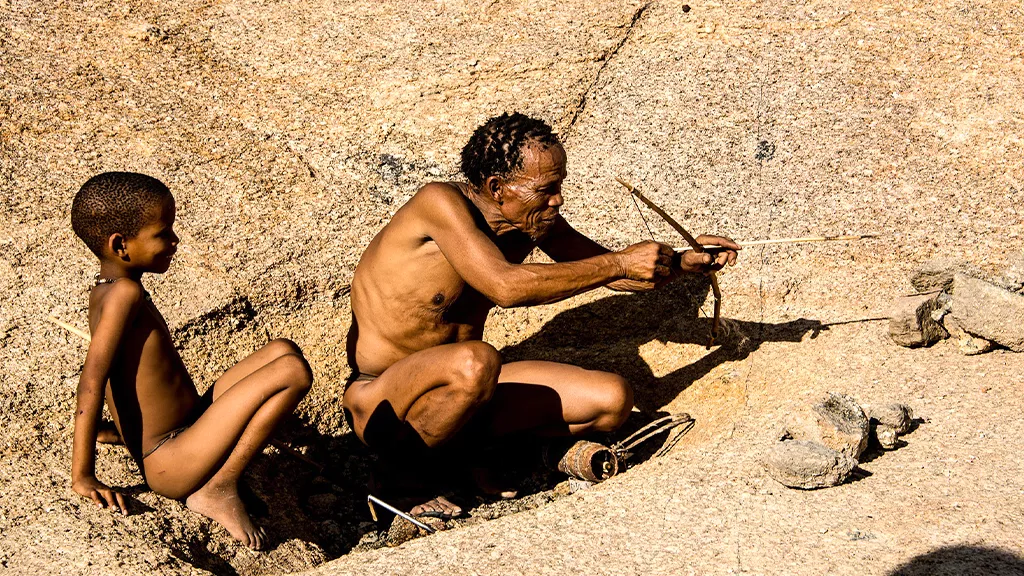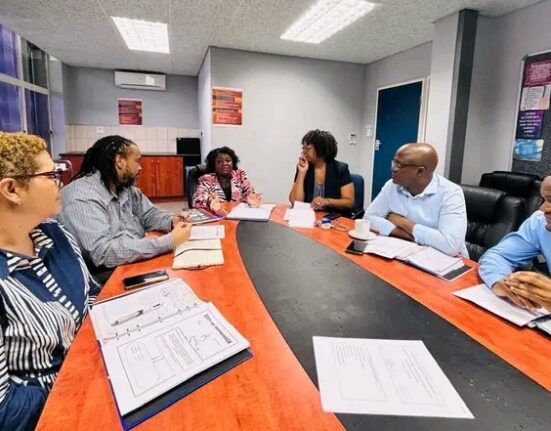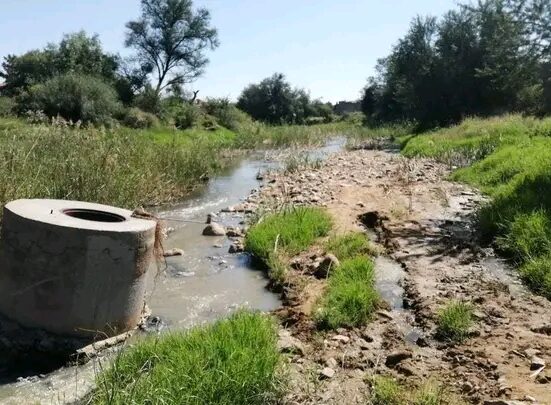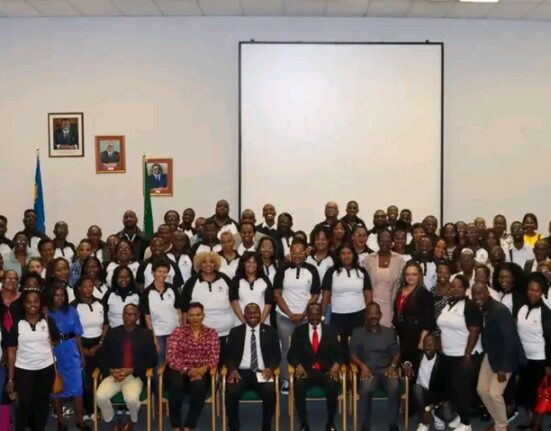The San people of Namibia, often referred to as the indigenous peoples of southern Africa, are renowned for their rich cultural heritage, deep connection to the land, and an intricate knowledge of the natural environment. For centuries, they have lived as hunter-gatherers, utilizing their extensive understanding of plants, animals, and survival strategies to thrive in some of the harshest landscapes in the world. However, in the modern era, the San have faced increasing pressure from globalization, land encroachment, and cultural assimilation. Despite these challenges, the San people of Namibia are finding innovative ways to preserve and pass on their indigenous knowledge to future generations.
This article explores the ways in which Namibia’s San people are actively working to safeguard their ancient traditions, languages, and survival skills while adapting to the pressures of the 21st century. From traditional storytelling to cultural preservation projects, their efforts offer valuable lessons in resilience, cultural survival, and the importance of safeguarding indigenous knowledge in an increasingly globalized world.
1. The Importance of Indigenous Knowledge
Indigenous knowledge, also known as traditional ecological knowledge (TEK), refers to the wisdom, experiences, and practices accumulated over generations by indigenous communities. This knowledge is deeply rooted in the culture, customs, and worldview of the people who have lived in close harmony with their environment for millennia. For the San people, indigenous knowledge encompasses a wide array of survival skills, including hunting techniques, medicinal plant use, weather prediction, and animal behavior.
The San people’s intimate relationship with nature has enabled them to thrive in some of the most challenging environments, including the vast deserts of Namibia. Their knowledge of the environment is not only essential for survival but also for maintaining their cultural identity. In a rapidly changing world, preserving and transmitting this knowledge has become increasingly vital for the San communities in Namibia.
2. Cultural Revitalization Through Storytelling
One of the primary ways in which the San people are preserving their indigenous knowledge is through storytelling. Traditionally, San knowledge was passed down orally from elders to younger generations. Elders would share stories, myths, and legends around the campfire, teaching younger members about their history, the natural world, and the values that define their culture. These stories often include intricate details about animal behavior, medicinal plants, weather patterns, and survival strategies.
Today, storytelling remains a central part of San culture, but it has also adapted to modern forms of communication. In Namibia, some elders and community leaders are recording traditional stories through audio and video recordings, ensuring that future generations can access this knowledge even in the absence of a direct oral tradition. By documenting these stories, the San are preserving their cultural heritage and ensuring that it remains accessible in a changing world.
3. Revitalizing San Languages
Language is an essential component of indigenous knowledge, as it carries the values, traditions, and worldview of a community. For the San people, their languages are deeply intertwined with their identity and cultural practices. However, many San languages, such as !Kung, !Xóõ, and Khwe, are endangered due to the pressure of dominant languages like Afrikaans, English, and Oshiwambo.
In recent years, efforts have been made to revitalize these languages and ensure their continued use in San communities. Language preservation programs have been established in schools, where children are taught their native languages alongside official languages. These programs not only help to ensure the survival of San languages but also reinforce cultural pride and strengthen the connection to their ancestral heritage.
The San people are also working to document and record their languages in written form, allowing future generations to learn and use them more easily. The creation of language resources, such as dictionaries, textbooks, and language apps, is playing an important role in preserving San languages for the next generation.
4. Traditional Ecological Knowledge and Conservation
The San people’s traditional ecological knowledge is a valuable asset in the field of environmental conservation. Their deep understanding of the natural world, including animal tracks, plant life, and ecosystem dynamics, has long made them effective stewards of the land. As such, there is growing interest in integrating San knowledge into modern conservation efforts.
In Namibia, the San people are actively involved in wildlife conservation projects, particularly in areas like the Namib Desert and the Kalahari. Through partnerships with conservation organizations, the San are able to contribute their knowledge of wildlife behavior, medicinal plants, and sustainable resource management practices. In return, they are gaining access to training and education that allows them to adapt their traditional knowledge to contemporary conservation challenges.
For example, the San people have long been experts in tracking wildlife, a skill that is highly valuable in wildlife monitoring programs. Their ability to track animals across vast distances, identify signs of poaching, and predict animal movements is a unique and vital contribution to conservation efforts.
5. Cultural Heritage Centers and Museums
To preserve and share their cultural heritage, the San people of Namibia have established cultural heritage centers and museums that serve as educational hubs for both local communities and visitors. These centers showcase the traditional crafts, tools, artwork, and cultural practices of the San people, while also providing a platform for storytelling, music, and dance performances.
One example is the //Karas Community Museum, which aims to preserve the history and culture of the San people living in the southern regions of Namibia. Visitors to the museum can learn about traditional San tools, hunting methods, and the importance of community cooperation in San society. Additionally, the museum highlights the ongoing efforts to revitalize the San language and protect their land rights.
Cultural heritage centers also provide opportunities for San artisans to sell their traditional crafts, such as beadwork, wood carvings, and baskets. These economic activities not only support the livelihoods of San communities but also help to promote and preserve their unique cultural expressions.
6. Community-Based Conservation and Eco-Tourism
Another significant way that the San are preserving their knowledge and culture is through community-based conservation and eco-tourism projects. These initiatives allow the San people to showcase their traditional skills and knowledge to visitors, while also benefiting economically from the tourism industry.
In Namibia, several eco-tourism projects have been developed in collaboration with the San people, where visitors can experience traditional San hunting techniques, learn about medicinal plants, and participate in cultural activities such as storytelling and dancing. These programs not only provide a sustainable income for San communities but also create opportunities for cross-cultural exchange and education.
For example, the San people in the Zambezi region have partnered with local tour operators to offer cultural tours, where tourists can learn about San traditions, survival techniques, and the importance of preserving the environment. These initiatives provide a platform for the San to reclaim their cultural heritage while also educating the public about the importance of protecting indigenous knowledge and preserving cultural diversity.
7. Government and NGO Support for Indigenous Knowledge
In recent years, the Namibian government, along with various NGOs, has recognized the importance of preserving indigenous knowledge and supporting the San people in their efforts to protect their heritage. There are several initiatives aimed at improving the quality of life for San communities, including projects focused on education, health care, land rights, and cultural preservation.
For example, the Namibian government has supported the creation of language preservation programs and educational initiatives that teach San children about their culture, traditions, and languages. NGOs, such as the Desert Research Foundation of Namibia (DRFN) and the Namibia Nature Foundation (NNF), have also partnered with San communities to promote sustainable resource management practices and support eco-tourism ventures.
These efforts have led to increased awareness of the importance of preserving indigenous knowledge and ensuring that it is passed down to future generations.
The San people of Namibia are working tirelessly to preserve their indigenous knowledge, traditions, and languages in a rapidly changing world. From revitalizing their languages to sharing their ecological wisdom with conservationists, the San are ensuring that their cultural heritage is not lost to history. Through a combination of traditional storytelling, educational programs, eco-tourism, and community-based conservation efforts, the San people are safeguarding their knowledge for future generations, while also making valuable contributions to the global understanding of indigenous cultures and environmental stewardship.
As Namibia continues to face the challenges of modernization and globalization, the preservation of indigenous knowledge will remain a key component of the country’s cultural landscape. The San people’s efforts to maintain their traditions offer a powerful reminder of the importance of cultural diversity, resilience, and the need to protect the invaluable wisdom of indigenous communities.













